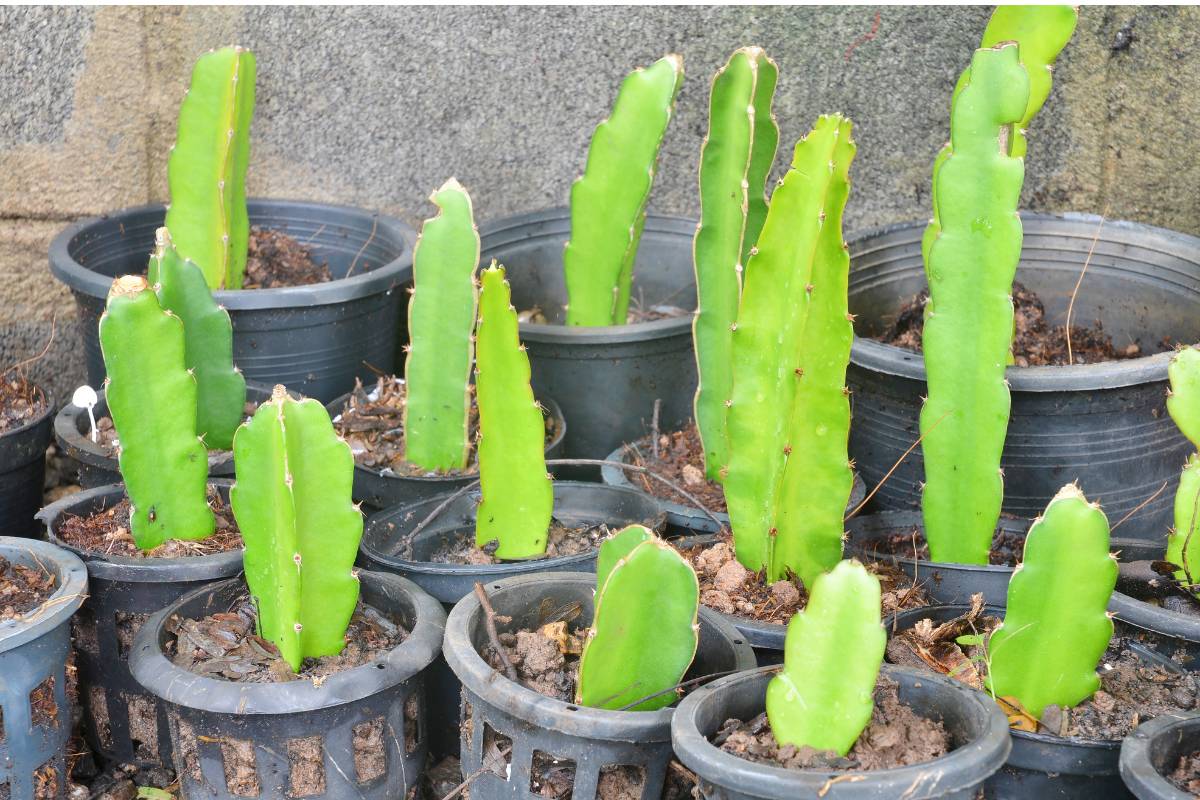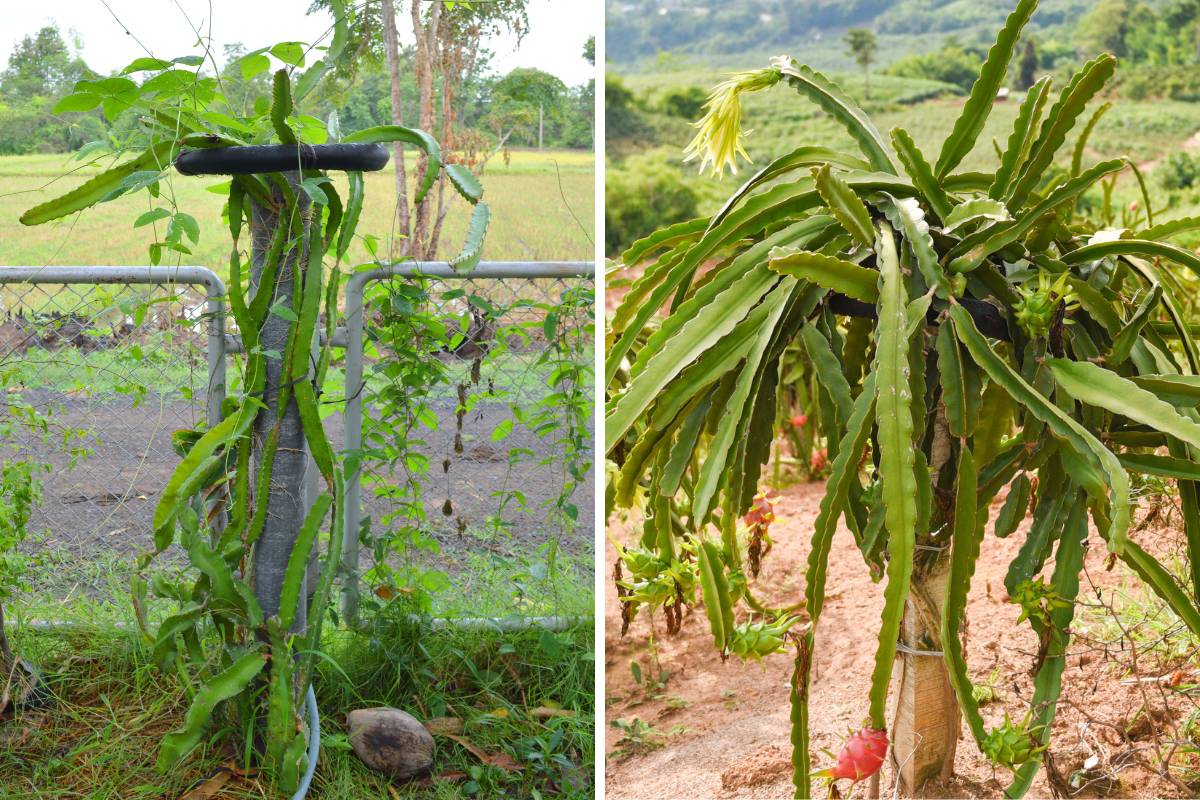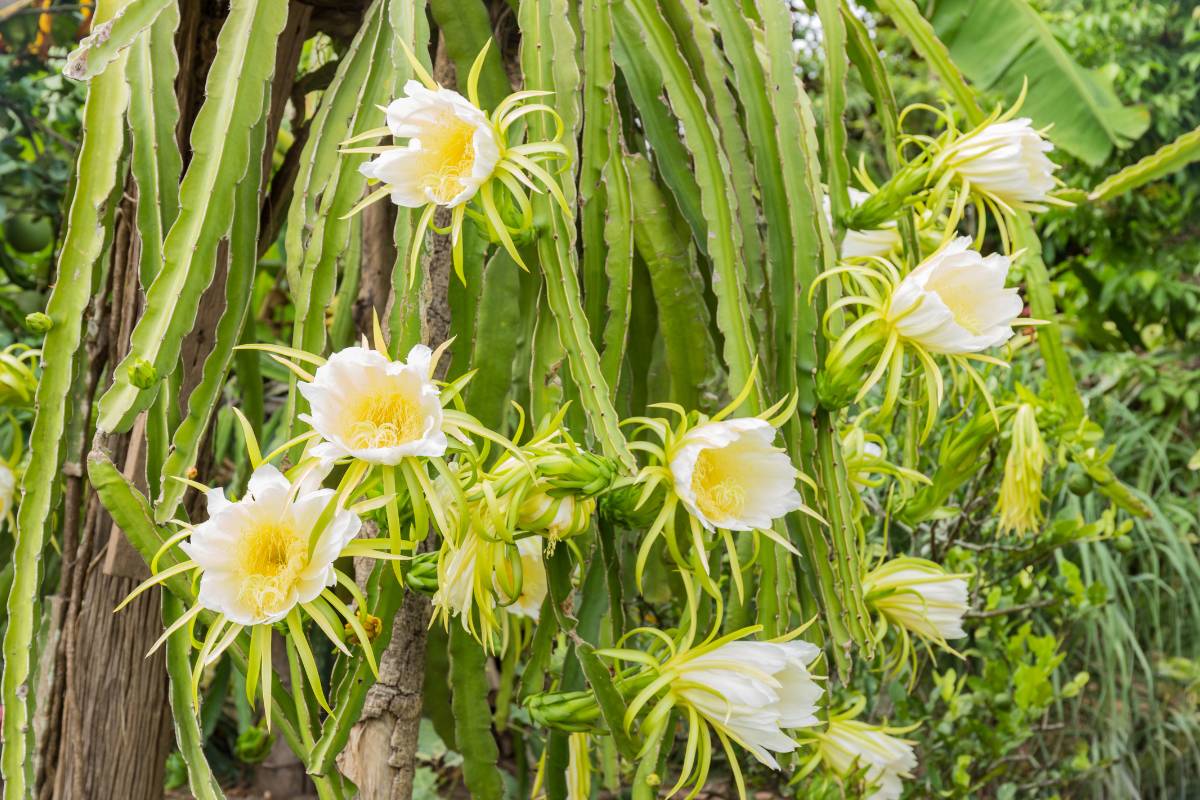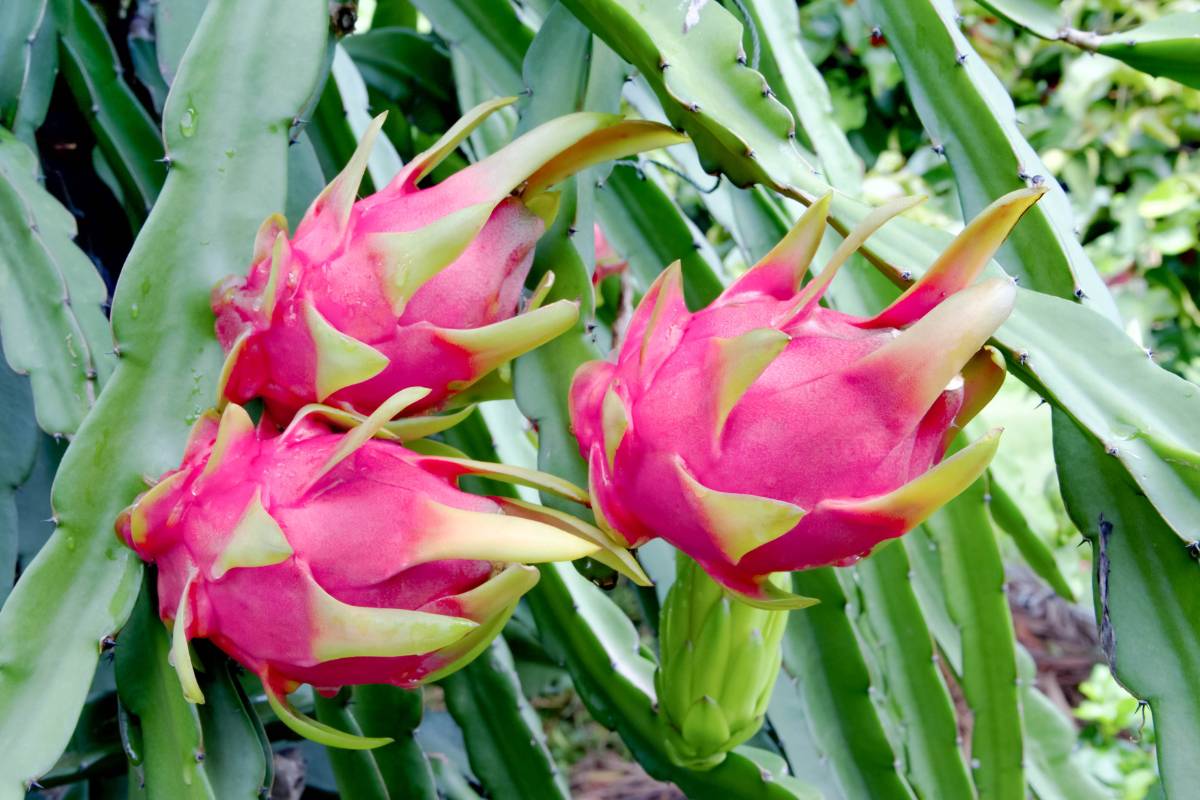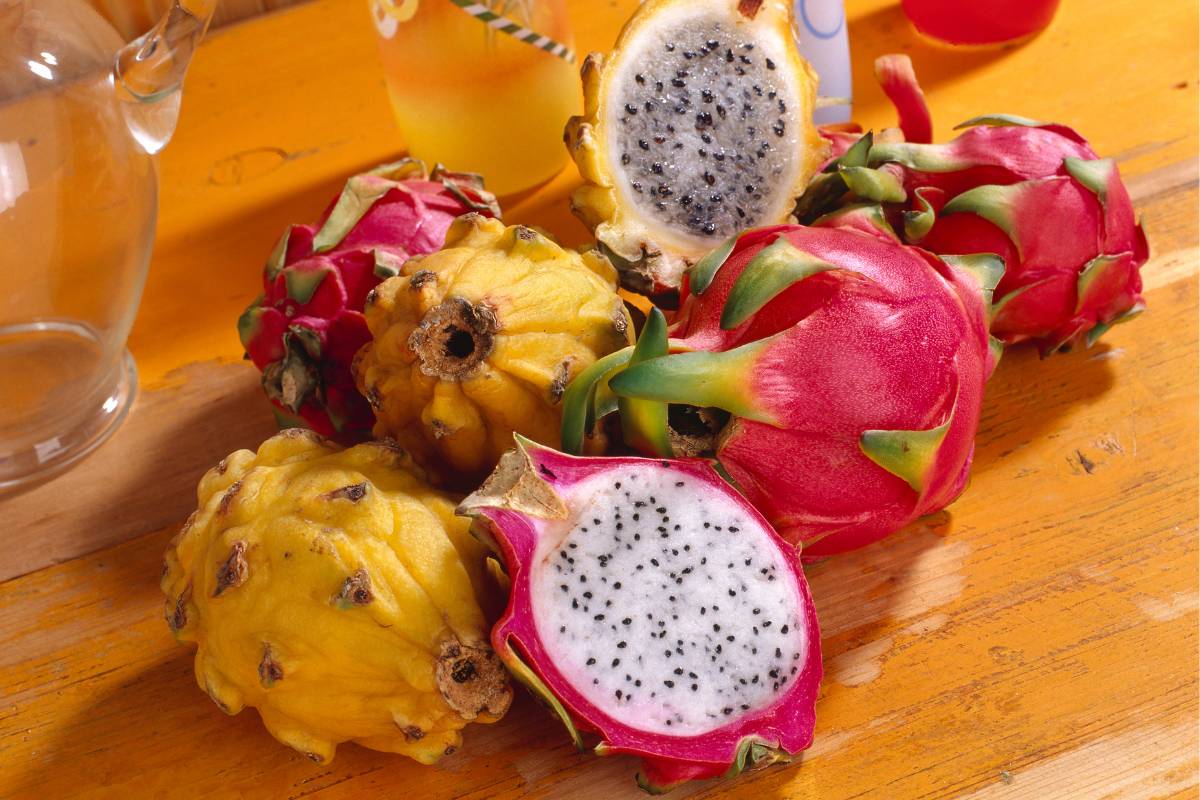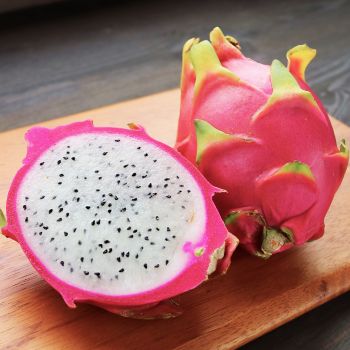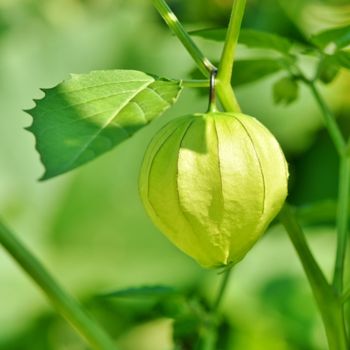When it comes to growing tropical fruit, dragon fruit should be at the top of your list. The striking plants look like something from a Dr Suess book, with succulent stems, large ornamental flowers and vibrantly coloured fruit with flavours ranging from lemon to melon to berry.
The Enigmatic Dragon Fruit
Originating from South America, where it is known as 'pitaya' or 'pitahaya', dragon fruit is a climbing epiphytic cactus with three or four ribs running the length of its succulent, spiky stems. Once known botanically as Hylocereus, plants are now classified in the genus Selenicereus.
Dragon fruit hybridises easily and there’s a huge number of varieties available for home gardeners to grow. Most belong to the following three species:
- Selenicereus undatus (Pitaya Blanca): This common species features white flesh, red skin with green scales, and medium to large fruit.
- Selenicereus monacanthus (Pitaya Roja): Varieties in this group have red flesh and pink or red skin, offering a delightful raspberry and melon flavour. They are also known for their high antioxidant content.
- Selenicereus megalanthus (Pitaya Amarilla): Known as yellow pitaya, the fruit have yellow skin and white flesh. While less commonly grown, perhaps because of its spiky fruit, it is highly regarded for its superior flavour. This species is more cold-sensitive and produces smaller fruits than others but is a favourite among enthusiasts.
In their natural habitat, the plants attach themselves to trees using aerial roots, branching out once they reach the top. The large flower buds take a month or more to develop, and are followed by large, short-lived white, pink or purple flowers that open at night and give rise to a raft of alternative common names: ‘Queen of the Night', 'Night-blooming Cactus', 'Moonlight Cactus' and 'Cinderella Plant’ among them.
The fruit itself has a hard outer shell covered in prominent fins, scales or thorns. It can take four to 12 weeks to develop, longer in cool climates. The fruit can be eaten fresh or incorporated into sorbet, ice cream, smoothies or other drinks. Depending on the variety grown, expect sweet flesh enhanced by berry, melon, lemonade or coconut flavours.
Why ‘Dragon Fruit’?
While dragon fruit originates in Central and South America, it has been adopted by many Asian countries to the extent that it’s now one of Vietnam's major exports. No doubt inspired by the fruit’s scaly appearance, Chinese marketers are said to have come up with the name ‘dragon fruit’, along with the following modern myth: According to folklore, dragon fruit was believed to have fallen from the nostrils of fire-breathing dragons during battle. After a dragon was slain, the fruit was collected and presented to emperors as a symbol of victory.
How to Plant Dragon Fruit Cuttings:
Dragon fruit is a tropical and subtropical fruit that’s frost sensitive; in cool climates, cuttings are best started under cover and the plants grown in a greenhouse or warm, sheltered and frost-free microclimate.
Cuttings can be started in a small pot and then transferred to their permanent position in a larger container or in the garden. Cuttings root well indoors. Alternatively, place pots in a warm, shady position outdoors; cuttings may suffer from sunburn if grown in full sun.
Fill a 14-20cm diameter pot with good quality potting mix or mushroom compost. Plant each cutting 2-3cm deep with the arrow marked on the cutting pointing to the sky; this is important as cuttings will only form roots at their base.
Sitting cuttings upright helps avoid the risk of sunburn, rot and other diseases and makes it easier to transplant them to a post later. Support them with a bamboo cane or thin stake tied with grafting tape or soft plant tie.
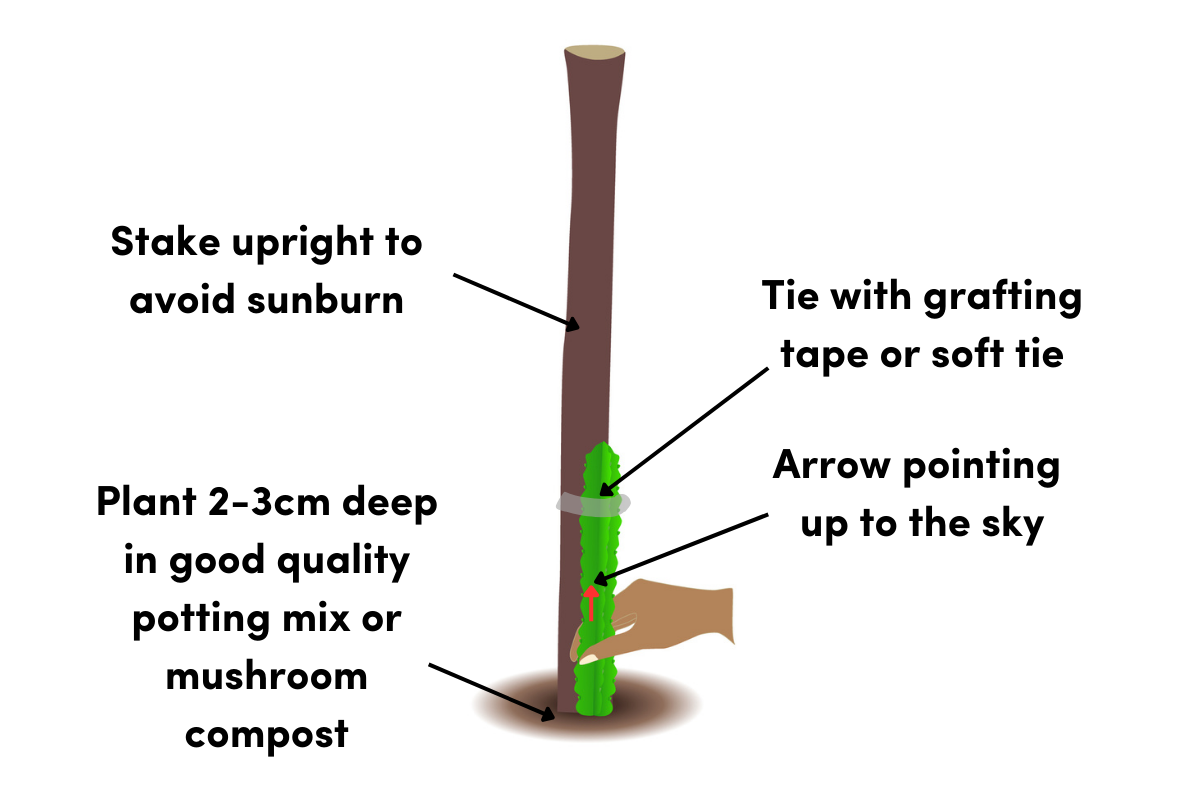
Once they've formed roots and strong new growth, the cuttings can be transplanted. It’s a good idea to harden off cuttings before transplanting them to avoid sunburn. In cold climates, do not move them outdoors until all danger of frost has passed.
Dragon fruit can be grown in the garden or in large containers such as a half wine barrel. Plants need to be supported by a very strong post or trellis, with three or four cuttings usually grown up each post. The post can be wrapped in jute or canvas to encourage aerial roots to develop, though this is not essential. Either way, tie the plants to the post at regular intervals to encourage upwards growth.

To give some idea of the strength and weight of posts required, commercial growers use 2m tall concrete posts dug at least 60cm into the ground, topped by a frame to support the side branches. If growing in a pot, it’s advisable to support the post with cross-bracing or by screwing it in at the bottom, as plants become very top-heavy as they grow. Use a large, wide pot to help avoid overbalancing.
For more information about cultivating dragon fruit plants, see our comprehensive grow guide.
Growing dragon fruit is not only a rewarding gardening experience but also a way to bring a touch of the exotic to your own backyard. With the right care and attention, you can enjoy harvests of juicy dragon fruit while nurturing a piece of South American culture. So roll up your sleeves, plant some cuttings, and get ready to embark on a dragon fruit adventure of your own!
